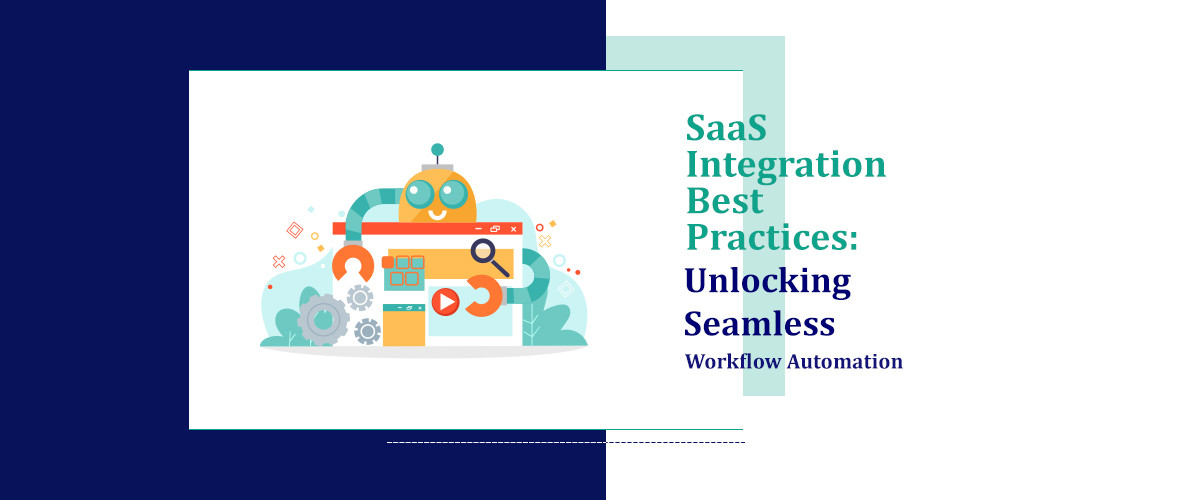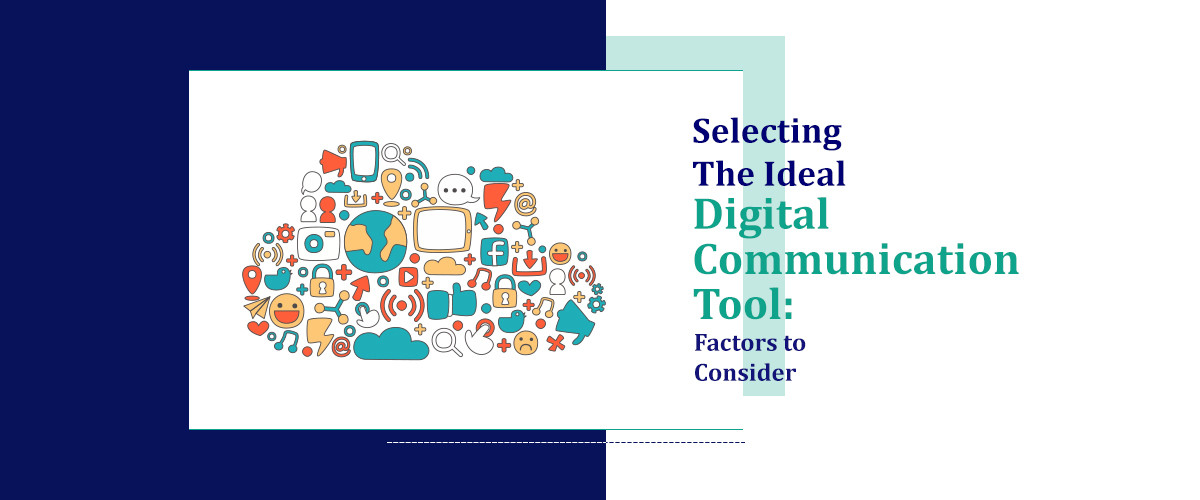What we'll cover
SaaS (Software as a Service) integration optimizes processes and boosts production across existing business environments. The need to successfully integrate these apps cannot be overstated as businesses use cloud-based software solutions increasingly. The smooth connectivity across many business tools made possible by SaaS integration guarantees that data easily moves across systems and processes.
This increases operational effectiveness and encourages more flexible business environments and real-time decision-making. Modern business technology plans must include SaaS integration because of the rapid growth of SaaS applications across sectors. This highlights the need for strong integration strategies to manage complicated interactions inside IT infrastructures.
Understanding SaaS Integration
SaaS integration combines different cloud-based software apps with different functionalities into an integrated, unified system that improves company performance. Businesses may reduce silos, increase data flow, and simplify operations across departments and platforms with this connectivity. Businesses usually use one of two main kinds of SaaS integrations: vertical or horizontal.
Vertical Integration (Data-Driven)
-
This integration involves integrating SaaS apps that manage data operations for the same business purpose. An example would be combining various marketing tools that track customer engagement and retention data. The purpose is to provide a seamless data flow across applications supporting the same business objective, improving data availability and accuracy.
Horizontal Integration (Process-Driven)
- Vertical integration focuses on data; horizontal integration links different business departments, like marketing, sales, and customer service, to provide a smooth operating flow. Process-driven, this kind of integration guarantees that every relevant department has instant access to the same data, improving workflow efficiency and the whole customer experience
SaaS Integration Best Practices
In today's digital age, smooth process automation tool needs effective software-as-a-service (SaaS) application integration. Effective integration of the many SaaS solutions that companies rely on more and more might boost productivity and stimulate innovation. Here, we explore best practices for SaaS integration, focusing on determining integration requirements, selecting appropriate tools, organizing an effective installation, considering security, and guaranteeing long-term success.
Identifying Integration Needs
Using SaaS connectors to improve productivity and optimize your operations requires a detailed understanding of your business processes. The following are actions you can take:
Identifying Business Processes
-
To see how information and work move across your company, map out your existing processes. You will better view the whole picture and pinpoint important procedures essential to your business.
Finding Inefficiencies and Bottlenecks
-
See where delays happen in your process. Laborious data input, information silos that restrict access, and departmental communication breakdowns are typical problems. Finding the ideal SaaS solution will be guided by your awareness of these problems.
Matching Needs with SaaS Capabilities
-
After identifying the inefficiencies, match these needs with the capabilities of possible SaaS services by researching whether the characteristics of various SaaS solutions may automate or simplify these problematic areas.
Choosing the Right Tools
Integrating SaaS applications successfully depends heavily on the choice of tools. Here's how to approach this
-
Evaluating Feature Sets: Select SaaS solutions that provide the desired features and work well together. The synergy of connected tools generally increases workflow efficiency.
-
Integration compatibility: See whether SaaS tools support APIs and webhooks. That guarantees their simple connection to other applications. Ahead of time, knowledge of the integration capabilities might save expenses and complications later on.
-
User Interface and Experience: The SaaS apps must be very usable. A simple and uniform user interface encourages better acceptance and use of the apps across team members.
Planning for Successful Implementation
Successful integration of SaaS calls for careful planning. Here are key considerations:
-
Standardized Data Formats: Use webhooks and APIs, among other standardized data formats, for smooth data sharing. A well-defined data mapping plan guarantees data moves across systems without loss or corruption.
-
Choosing the Right Integration Method: Select the best integration strategy for your requirements and technological capabilities. Options include:
-
SaaS providers provide built-in connections.
-
Platforms for third-party integration (iPaaS) for more complicated scenarios.
-
Get custom development if you can't find what you need in a ready-made option.
-
Data Mapping and Transformation: Data mapping and transformation must be defined for all systems to guarantee compatibility. Plan the unification of data from many sources into a logical structure.
Security Considerations During Integration
Integrating SaaS apps is non-negotiable about security. Key security practices include:
-
Security of Data: Put strong authentication and encryption in place. Make sure every data transaction is safe to avoid unwanted access.
-
Compliance Requirements: Recognize and abide by industry-specific data protection laws, including the CCPA or GDPR. Client confidence is increased, and legal problems are avoided through this compliance.
-
Vendor Security Practices: Evaluate and confirm your selected SaaS providers' security measures. Select providers that can provide robust security procedures and have industry-recognized security certifications.
Ensuring Long-Term Success
Think about these strategies for your SaaS integrations to be successful over time:
-
Thorough Testing: Create an extensive testing schedule that addresses every conceivable situation and user interface with the linked systems. Before launch, this guarantees that every part functions in unison.
-
Monitoring and Maintenance: To swiftly find and fix any problems, set up a process for monitoring the interconnected systems. This covers error rates, performance, and data integrity tracking.
-
User Support and Training: Ultimately, show your employees how to use the new technologies efficiently. Support users as they adjust to the integrated solutions to ensure they can do their everyday tasks.
Overcoming Integration Challenges
Integrations of SaaS often provide many challenges that might reduce their effectiveness and efficiency. Risks to data security, incompatibility across multiple applications, and scalability limitations are among these challenges.
Data Security Risks
- Integrating SaaS applications exposes businesses to data breaches and security risks. Sensitive data is often exchanged across multiple platforms; hence, data protection during integration is critical. Secure encryption and data transmission protocols are essential for data protection and compliance with privacy laws.
Compatibility Issues
- Compatibility issues might arise when integrating many SaaS apps, particularly when working with old systems or various software environments. Problems like this might stop data flow and result in ineffective procedures. Businesses should ensure that their integration solutions enable variable setups and can smoothly link different systems to overcome these difficulties.
Scalability Constraints
- Organizations will require more integration and have bigger data volumes as they grow. Scalability is crucial for integration solutions. Choosing integration platforms that can support company expansion successfully by managing growing loads without sacrificing performance is crucial.
Diagnosing and Troubleshooting
- Seamless operations depend on efficient methods for identifying and fixing integration problems. This involves setting up thorough monitoring tools to identify and notify teams of real-time integration errors or disparities. It might also be easier to identify and fix problems quickly if you keep thorough records and know integration processes.
Lifecycle of a SaaS Integration
A SaaS integration's lifecycle includes several important steps, such as creation, release, and ongoing upkeep, to ensure it works well in the long run.
Development to Deployment
-
The real integration building occurs during the development stage of the integration process. The system is then thoroughly evaluated to guarantee reliability and performance before using it. Prolonged verification processes are carried out throughout deployment to guarantee the integration functions as planned on all platforms.
Customer Service and Ongoing Modification
-
To handle any problems end users might encounter after deployment, ongoing customer service is crucial. Integration systems also need constant evaluation and modification to meet new business requirements and technical developments. With time, the integration is improved in efficiency and effectiveness thanks to this iterative process.
Documentation and Frequent Updates
- Throughout an integration, thorough documentation is essential. Any modifications or advancements in the integration procedure should be reflected in the regular modifications of this documentation. Regular upgrades are also required to address potential faults or vulnerabilities and adjust to new technological developments. This guarantees the integration is strong against changing security risks and preserves system integrity.
Future Trends in SaaS Integration
Emerging technologies like AI and ML will transform SaaS integration implementation and management as they become more important to corporate operations. With the help of AI and ML development services, data transfers across many SaaS platforms are becoming more accurate and efficient as more complicated integration procedures are automated. With the help of these technologies, integrations become smarter and more adaptable to the demands of the company thanks to predictive analytics, intelligent error management, and temporally improving adaptive learning systems.
Integration methods will certainly evolve with fast technology breakthroughs and changing business environments. More advanced, AI-powered automation solutions that simplify processes and provide perceptive analytics to support strategic decision-making are to come. As companies expand and diversify, smooth operations across ever more complicated SaaS ecosystems will depend on flexible and scalable integration solutions.
Conclusion
Adopting best practices in SaaS integration is important for businesses that want to succeed in a digitally-driven market; particularly those offering SAAS application development services. It's not only a technical need. Good strategies for integration guarantee that many software programs operate together smoothly, increase operational efficiency, and improve data coherence. Businesses must continue proactively improving and refining their SaaS connections as time goes on. Leading in this ever-evolving field will help businesses maintain their competitive edge while ensuring they are flexible and quick to react to emerging possibilities and problems in the digital sphere.
Streamlined processes, improved efficiency, real-time data access, scalability, and cost savings.
By conducting thorough compatibility checks, utilizing integration platforms, and implementing robust data security measures.
Data inconsistencies, API limitations, system downtime, integration complexity, and user adoption hurdles.
Data security is paramount to protect sensitive information. Encryption, access controls, and regular audits are vital.
Proper user training fosters adoption and maximizes the benefits of integration, reducing resistance and enhancing productivity.




